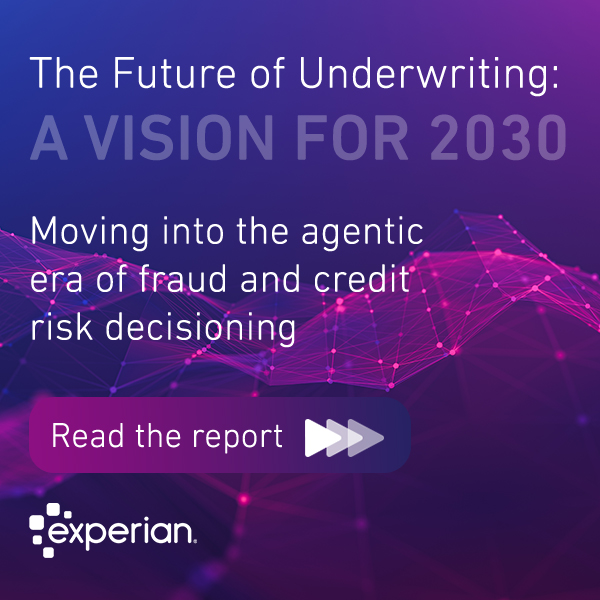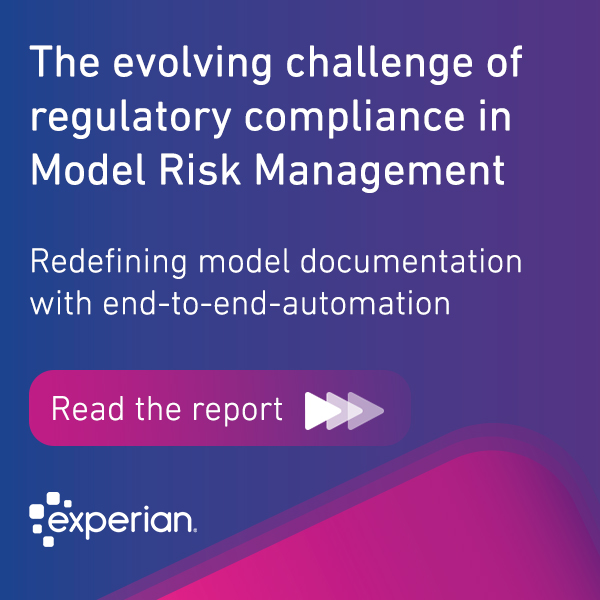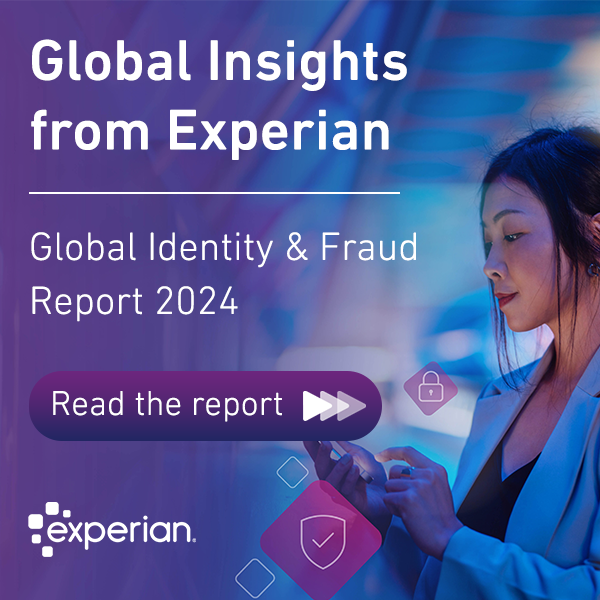Monthly Archives: October 2020

We’ve compiled the top October headlines from across the globe to keep you in the know on the latest hot topics and insights from our global experts. Q&A: Consumer and business outlooks since Covid-19 David Bernard, Senior Vice President of Global Marketing and Strategy, provides his perspective on consumer demand for digital banking and business preparedness. #TradeTalks: The Shift in Online Trends as a result of Covid-19 In this Nasdaq #TradeTalks podcast, Steve Wagner, Global Managing Director of Decision Analytics, discusses how Covid-19 is driving consumer behavior change and accelerating the shift to digital. 43% of Indian consumers record decline in household income: Experian Global The Economic Times covers global research findings on the impact of the Covid-19 pandemic on Indian consumer income, with insights from Sathya Kalyanasundaram, Managing Director, Experian India. Qual será a velocidade da retomada da economia brasileira em 2021? This Estado de Minas article explores viewpoints on what the state of the Brazilian economy will be in 2021, citing current trends across different sectors. TechBytes with Marika Vilen, SVP Platform Commercialization, Global Identity & Fraud at Experian MarTech Series speaks with Marika Vilen about meeting customer needs in the 'new normal,' managing identity and fraud prevention strategies, benefits of device intelligence, and industry trends. Stay in the know with our latest insights:

For executives and teams across the financial services sector, the question isn't should we digitally transform—but how. That's where things get tricky. According to the Financial Brand’s Digital Banking Report, when asked about the progress of their digital transformation journey, only 17% of organizations reported that their transformation was deployed “at scale” — and a scant 7% said their transformation was deployed at scale and working. Tackling an enterprise-wide transformation effort is no small feat; it requires significant investment and time. Still, many organizations become understandably discouraged when transformation efforts don't yield the anticipated results. And experts contend that transformation initiatives fail not because of products but because organizations need wholesale culture changes to sustain innovation. All that may be true. However, a boil the ocean approach can dramatically increase the timeline of an already lengthy process. By building a strategy based on small iterative wins, businesses can break down the process and deliver interim tangible successes. In doing so, organizations sustain momentum for the broader digital transformation vision and benefit from feedback along the way. Your north star In concept, digital transformation suggests that we are in a finite time and place going from point A to point B. At some point, every financial institution will be digitally transformed. Manual processes, on-premise software, and siloed data will start to disappear. And conversations about transformation will give way to discussions of how to sustain and further advance the bank's digital capabilities. There actually isn’t a “finished state”, but a continuous progress towards a better customer experience. But establishing a long-term objective for transformation initiatives is critical. The leadership team needs to have a vision, and relay the overall goal to the rest of the organization. For instance, in the Financial Brand survey, banks and credit unions noted that improving risk management and security, improving the customer experience, and reducing costs were their top areas of focus. (Unfortunately, the same study revealed that less than half of the organizations surveyed reported high success levels in transforming these areas). In establishing a digital transformation north star, you ensure that smaller projects align with the broader vision. The path there may not be perfectly straight, but leaders can prioritize initiatives that point in the same direction. Small wins, big results As noted, it's challenging to complete a digital transformation journey in one fell swoop. Most organizations can't change technologically and culturally at a rapid pace. Yet, there's a pressing need for innovation. Creating a roadmap of incremental projects and wins can ensure your organization is making steady progress toward that north star goal. I often advise digital transformation teams to start with a small project that seems achievable. That may be transitioning a non-cloud offering to the cloud or introducing an existing interface to a new geography. You solve that problem, and then you evangelize the success; even if it's a small win, you want to shout about it. It's not about nourishing your ego. Instead, the celebration helps build momentum with your frontline staff and clients. It also provides proof points for executive stakeholders. The latter makes it easier to continue funding projects once your leadership sees that the initiative produces results. Then you can begin to expand your transformation perimeter, building on each win with another digital project. Dialing in your customer recognition and improving authentication, for instance, offers areas that are ripe for innovation—especially at a time when online transactions are on the rise and customer expectations are high. The right team for the job Successful digital transformation initiatives require leadership by a core team that's well-networked across the organization. They need to be highly visible to other teams and committed to promoting the cause and selling the vision, and making noise about any success because that's a core part of their job. Leveraging data and analytics along the way is also essential. Data can help you determine which problems to prioritize. And advanced analytics offers critical insights into what's working for customers and the areas that merit attention sooner rather than later. The process of digital transformation is an evolution. Organizations that view it as such should strive for strategies that deliver wins early. That way, they can build momentum, align near-term projects around long-term goals, and reap the rewards of digital transformation throughout the entire journey. Related stories: Impact of technology on changing business operations New global research: The impact of Covid-19 on consumer behaviors and business strategies Digital transformation through cloud-first decisioning

We may not always get what we want, but in many cases, if we feel that we were treated fairly, we’re satisfied. Our July 2020 global research reveals as much—in the survey, 52% of U.S. consumers that believed that organizations treated them fairly during the Covid-19 crisis said they’d give the company more of their business. Conversely, 76% of consumers who thought businesses treated them unfairly reported that they wouldn’t be returning customers. As we progress through the pandemic, fairness will become a critical component of the customer experience. Government support for workers and businesses in many countries is ending, and we’re likely only beginning to feel the real economic impacts. Financial institutions that prioritize fairness in their customer engagements—and leverage advanced analytics and automation to help—will likely retain more customers in the near-term and build relationships that last into the future. We’ve only just begun For most of the West, the pandemic began in earnest in March. The economic consequences were quick to follow. In our global survey conducted in July, two times as many consumers reported that they were having difficulty paying their bills compared to before the Covid-19 crisis. As a response, 20% of consumers said they were cutting back their discretionary spending, and another 13% reported that they’d dipped into their savings to make ends meet. Around the world, those who were struggling reached out to financial institutions for help. A full 5% of global consumers enrolled in some form of financial assistance, including from savings and loan institutions, retail banks, insurance companies, and government programs. Hearteningly, more than half of these consumers said they’d had a positive experience. And as previously noted, a similar percentage felt they were treated fairly. That’s the silver lining of an exceptionally challenging year. However, for consumers, the struggle will likely continue. Much of the support that financial institutions have provided came via government aid or mandates that are close to expiring. For instance, in the U.S., the CARES act required lenders to offer homeowners six months of fee-free forbearance on loan payments. With that grace period coming to an end, one lender reports that only 10% of borrowers have exited forbearance into a modified payment plan. Government assistance is running out, but the fact that entire sectors such as travel and hospitality remain incapacitated should still cause concern. Over the next year, consumers will likely continue to face financial obstacles, but with a shrinking safety net. Streamlining fairness Amidst the continued uncertainty, organizations should continue to prioritize fairness. Advanced data analytics can help with that task, and the technology also promises to make it easier and faster. Consider that in the 2008-2009 financial crisis, assessing a customer’s ability to afford a loan or credit product was primarily a manual process. Organizations faced backlogs of customers needing help and were unable to respond in a timely manner. Today, financial institutions can use advanced analytics and machine learning to leverage data, with the specific aim of assisting customers in financial straits. For instance, it may not be feasible for banks to permit customers to remain forbearance for another six months. However, they can use data to quickly and accurately determine what payments customers can afford. The technology enables organizations to scale their financial workout or accommodation efforts, reducing the manual workload. Just as importantly, the analytics also provides data to back decisions, making the process more transparent. There’s a big difference between thinking you’re being fair and being able to prove it. With an analytics program, organizations can inform customers exactly what they’re being offered and why. Understanding the data empowers customers to make better decisions about whether they accept any aid. In some parts of the world, regulators are also requesting similar assurance that the banks have provided options in the customers’ best interest. A challenge—and opportunity Fairness and trust are closely connected. And when it comes to the customer experience, incorporating both yields happier, more loyal customers. I often think back to work I did with a banking organization earlier in my career. Our NPS scores regarding our collections, recovery, and fraud team were quite good. It’s easy to assume that customers in financial distress may be less than pleased to be dealing with creditors or lenders. But the dynamic shifts when you’re able to help them at the time they need it most. Now, thanks to data and advanced analytics, financial institutions can implement fairness at every turn—limiting the economic damage to customers, reducing their own risk, and enhancing their relationships along the way. Related articles: Global research study: The impact of Covid-19 on consumer behaviors and business strategies The role of the virtual assistant: Meet consumer demand for digital experience Digitally managing your at-risk customers most impacted by Covid-19

Several months into the global pandemic and we know that general indicators of risk or stress don’t reveal enough about what’s really going on within your customer portfolios. We also know that most institutions heavily use statistical models in identifying and capturing risk drivers in order to make decisions. Active model calibration in current circumstances can have a measurable effect on approvals and expected loss within a few weeks of being implemented. Banks have managed through economic recessions and other stressed scenarios by adjusting various levers for liquidity and risk. None, however, have ever had to predict consumer behavior in a pandemic. How can credit risk executives regain control over disrupted risk models at a time of constant change? Four key actions to enact now for immediate and sustainable impact: 1. Increase the frequency of model health monitoring Many of the predictive models that financial institutions rely on aren’t stable enough to handle real-world disruptions. Nor are the models re-calibrated frequently enough to appropriately assess risk in the rapidly changing situation we currently face. Monitoring models on a quarterly basis isn’t enough, but that tends to be the average frequency for most financial institutions. Increasing the frequency of model monitoring processes and identifying the need for a change in models sooner leads to significant financial impact. Depending on the asset size of the institution and the specific use case, financial institutions can potentially save millions of dollars in lost revenue or avoided credit losses. Automating the process supports an increased frequency of monitoring while requiring less effort from your analytics team. 2. Carry out ex-ante stress testing for your models Businesses should consider using ex-ante stress testing, in light of the difficulty in maintaining the accuracy of model predictions in changing conditions as well as to meet the heavy governance requirements of new models before their actual use. Traditional ex-post processes are effective in simulating what would have happened historically had a new model been in place. This is an extremely valuable exercise but isn’t very helpful in the current stress environment which is both unique and highly uncertain. Risk managers would like to have a go-forward view on model performance for decisions being made right now, not just a look-back view on decisions made historically. Applying ex-ante stress testing allows us to simulate and analyze a range of possible outcomes based on changing macro conditions, evolving consumer behaviors, and other uncertainties like the quality of underlying data. 3. Make practical, short-term adjustments We’ve seen in previous economic downturns that models can rapidly become unfit for purpose, and the consequences may not be fully apparent until long after the start of the downturn. In such circumstances, you shouldn’t necessarily attempt to make changes that you expect to be robust for many months into the future. There’s a strong case for making adjustments that are designed to address temporary circumstances and reviewing them at an increased frequency. Some businesses are taking a conservative strategy by tightening their credit policies and decisioning strategies. Other businesses are overlaying their models with certain attributes. For example, one could look at the number of open inquiries in the past 30 days. Since we know that attribute is unstable, we can pair it with an attribute that will give you more population stability – such as average open inquiries over the past 6 months. 4. Setup for rapid re-calibration or re-build of models The decision to re-calibrate or re-build a model during the pandemic would depend on multiple factors including the business need and model use case, the performance of the existing model, and the confidence in the quality and relevance of data for the model build. However, it is important that financial institutions and other businesses are set up to rapidly update their models. They should be actively working on re-calibrating/re-building their models in a test environment, evaluate the impact, and be prepared to deploy. The ability to rapidly update models will be a key differentiator as businesses compete to grow their portfolios and manage losses during and in the aftermath of this pandemic. As with many other aspects of our lives, credit risk management is being challenged by the new reality created by a global pandemic. Whether our response is temporary, or whether the crisis is accelerating an existing trend to be more active in model management, we need to react to maximize our portfolio performance. At the end of the day, none of us have been through a pandemic but we know our models can still work. It’s all about model accuracy and model governance and reducing error rates. By increasing the frequency and efficiency of model monitoring and re-calibration, we can drive business outcomes with more impact than ever before. Learn more: For many organizations, navigating and recovering from these volatile times will remain top priorities as they begin strategizing for the future. Get details on accelerating your digital transformation.

The Covid-19 crisis has been a bit like existing inside a shaken snow globe—it disrupted everything, and a lot remains up in the air. However, amidst the uncertainty of the pandemic, one thing has become evident: Cultivating customer trust is more critical than ever. Trust naturally generates loyalty. This is especially true during and after a crisis. For example, Experian's latest global research from July 2020 shows 52% of customers who felt that businesses treated them fairly during the pandemic plan to give those companies more of their business. That fairness bred trust and that trust will undoubtedly lead to more business. As consumers continue to increase their digital transactions, companies need to work hard to enhance customer trust. Improved identity authentication and recognition, for example, will play a key role. As everything begins to settle, those that succeed will find their business on far more steady ground. Does trust even matter? It's a good question—and the answer may be evolving in real-time. Consider that in 2019, Experian's global identity & fraud study showed that digital adoption did not indicate consumer trust of the business. "Consumers still adopt digital channels despite being highly skeptical of the businesses," the study noted. Social media provides an excellent example. Overall, most consumers distrust many of the popular social media platforms, yet they continue to use them regularly. Interestingly, widespread adoption is linked more to convenience than trust. However, this comes with a real caveat: Customers are less concerned about trust when the product is more frivolous. For instance, not trusting a media outlet or social media platform is very different from not trusting a financial institution. Also, a lack of adoption doesn't always mean that customers don't trust the business. In the financial service and payments realm, low adoption may simply reflect that customers use the platforms less regularly. Now, as consumers increase their reliance on online services, maintaining trust will be paramount. For instance, since Coronavirus began, consumers have increased their use and awareness of mobile wallets by 8%, and their use of retail payment apps by 6%. Balancing the convenience that people have needed with the necessary trust will go a long way towards keeping usage high once the crisis subsides. A virtuous cycle Within any digital experience, several components inform customer trust. You want to ensure accurate customer recognition, as well as transparency with your authentication. Robust fraud protection and positive digital experiences also play essential roles. These form the Cycle of Trust, a virtuous circle that ultimately encourages customers to share more information with your company and pursue more transactions. Our 2019 study reveals the importance of each part of this cycle, and we see it playing out now. For example, 90% of consumers are willing to participate in a more thorough identity verification process early on to have easier account access in the future. The ability to routinely and accurately recognize your customers helps build their trust in your technology and products. Also, 76% of customers have more confidence in companies that use biometrics over passwords to protect their information. That means that you can use advanced authentication strategies to enhance trust even more. Transparency also comes into play. Letting people know how you're using their information and whom you're sharing it with makes them more apt to trust your organization—and continue to share their data. The future of trust This cycle represents the goal. In practice, though, there are still quite a few challenges that prevent organizations from getting that wheel spinning. For instance, many have separated the risk assessment processes of verifying customers at signup, logging in, and transacting, so there's no seamless experience. Instead, customers navigate different solutions to onboard, authenticate their identity, and complete transactions. A company may recognize a customer at one point in the process, but not all the way through. What's more, organizations often still place the onus on the consumer for how they represent themselves in the digital world. Authentication processes require them to remember passwords or retrieve codes from their phone. But as noted, the pandemic has opened an opportunity for dramatic improvement. Consumers are at a rare moment in which they're open to change—and they're even looking for it. For example, since the beginning of the pandemic, 60% of customers say they have higher expectations for online experiences. More than half of customers are also more willing to provide organizations they trust with personal information and financial data. Finally, 44% of customers note that since Covid, they are more trusting of companies that demonstrate security. So how can you increase trust while also meeting evolving customer expectations? Organizations that pave the way will likely assume more responsibility for recognizing and authenticating customers. This starts with becoming more creative in using the data they already have access to recognize and authenticate customers. Extending this passive and continuous recognition across channels will also be necessary. Doing so connects the disparate processes and creates a more seamless digital experience. Such initiatives also remove the identity burden from the customer and kickstart that virtuous cycle. No one anticipated the Covid-19 crisis. But it's opened up the chance to create fairer, more trusting, more transparent digital experiences for everyone—and companies shouldn't pass that up. Related stories: Latest global research: The impact of Covid-19 on consumer behaviors and business strategies Better identifying your customers leads to greater trust Covid-19 as a Gateway to Fraud: Top 5 Global Fraud Trends to Watch Out for in 2020 Podcast: Securing online identity




